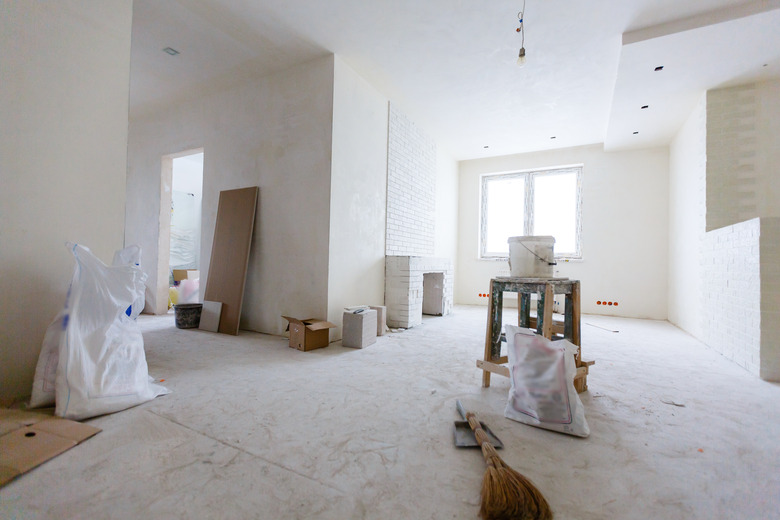How To Remove Cove Base Adhesive
Cove base adhesive is helpful for applying a white rubber baseboard to finish a basement wall, flush ceiling tiles to drywall or complete other home improvement projects that add an aesthetic, as well as a functional addition, to the room.
Sometimes, though, you may run into old adhesive issues when applying the sticky stuff or painting a vinyl wall base. But don't fret: there are a few ways to remove the strong resin.
Cove Base Adhesive
Cove Base Adhesive
A wall base connects the wall with the floor in a smooth line. The cove base adhesive attaches the white baseboard or wall base, which is typically made of a vinyl or rubber substance.
Cove base adhesive is a wet-set glue that is used for installing rubber and vinyl cove base. A good cove base adhesive will easily and cleanly bond to sound, smooth dry wall surfaces, ceilings and flooring.
The adhesive creates good contact between the drywall or ceiling tiles. Most cove base adhesives are made from latex acrylic. This makes it easy to install and clean up errant bits that squish from the wall base.
Prepare to Apply
Prepare to Apply
Code base adhesive is messy, industrial grade stuff that comes with a few hazards. When you are working with cove base adhesive, there are a few things to put in place so that you walk away without a problem. Any potentially harmful substance needs to be handled with care.
A solvent-based adhesive is flammable, so any tools, drills or other electric devices need to be monitored when in use. It can burn skin, so always wear gloves and wraparound safety glasses. Wear long sleeves, closed-toed shoes and long pants to prevent the adhesive from coming in contact with your skin.
The code base adhesives are made from volatile organic compounds, which can become a serious problem if they are inadvertently inhaled. Wear a mask and make sure where you are working is well ventilated.
How to Remove Wet Cove Base Adhesive
How to Remove Wet Cove
Base Adhesive
Vinyl baseboard glue removal isn't that difficult if it was recently applied. Have rags and a simple soap-and-water solution on hand to tackle bits of adhesive that finds its way in places you don't want.
To remove wet cove base adhesive, get a bucket of warm water and dish washing liquid. Wipe the adhesive away with the wet, soapy rag. This can take a few swipes before the glue is completely pulled up and the area is clean.
Once the adhesive has been removed, allow the area to dry completely before continuing to work on the floor, wall or ceiling.
Removing Hardened Cove Base
Removing Hardened Cove
Base
If you have a hardened cove base to remove, then you will need to use stronger cleaners. An affordable and easily available household cleaner can be used to remove the adhesive and isn't difficult to work with. Denatured alcohol works well in breaking down hardened cove base adhesive.
Apply a layer of rubbing alcohol to the cove base. Wipe it liberally onto the adhesive and allow it to seep in. After a few minutes, the adhesive will soften and be easier to wipe up or peel off.
Removing Stubborn Cove Base
Removing Stubborn Cove Base
A commercial cove base adhesive works well for stubborn or thick areas of the sticky stuff. Apply it by wiping it over the unwanted glue, making sure that the sticky stuff is thoroughly moist. If it dries out, then reapply quickly.
The stubborn swatches of adhesive will eventually turn to a jelly that can be rolled up with a clean rag.
Use water to rinse the area. Clean the area of the solvent and bits of leftover adhesive, and allow it to dry thoroughly before you work on the area with new materials.
